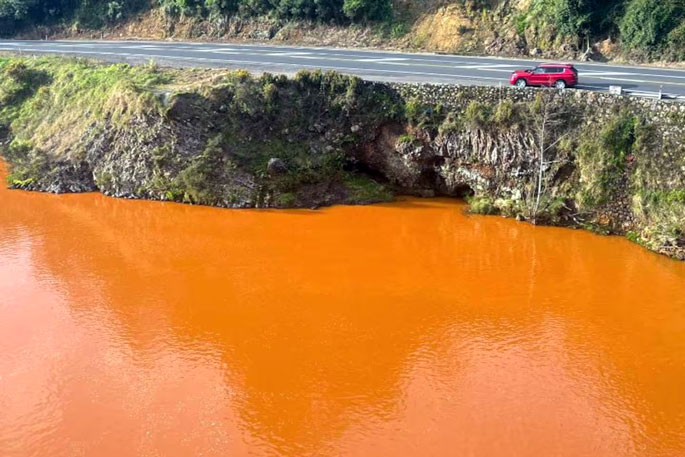Waikato Regional Council’s investigation into the discharge of orange sediment into the Ōhinemuri River last month is in its final stages, with “no clear evidence of culpability other than it being the result of mining activities more than 100 years ago”.
It comes nearly two weeks after the council confirmed it had results from testing for all 30 heavy metals, plus cyanide, following a bright orange sediment discharge from an historic mine shaft into the Ōhinemuri River on August 23.
On Tuesday, the council said a solid sediment sample taken from the stream bank and from the mine outlet showed very high arsenic levels that would pose a human health risk if ingested.
Council regional compliance manager Patrick Lynch said sediment was still in the Nohopane Stream and had settled along parts of the Ōhinemuri River. He urged people to avoid contact with the sediment, which was bright orange in colour due to high iron content.
The sediment could pose longer-term risk to aquatic organisms where it had accumulated, the council said.
Initial results from water monitoring in the Ōhinemuri River also showed elevated arsenic levels from suspended sediments (unfiltered water samples). However, all levels were back to normal by August 26, the council said.
Lynch said there was no evidence of any man-made structures in front of the mine entrance that would have caused the buildup of the sediment inside the mine prior to the event.
The sediment came from a mine entrance associated with the Comstock Low Level Drive, an exploratory mine that was mined between 1896 and the early 1900s which never proved profitable.
“There’s a tideline inside the drive that shows the sediment had built up to a depth of about 96 centimetres,” Lynch said.
“The mine entrance is in the face of a steep bank that drops away to the Nohopane Stream, and this entrance has over the years become overgrown and covered with branches and foliage.
“This vegetation created a natural dam effect, enabling the build-up of sediment inside. It appears that gravity and the weight of the sediment has overcome the strength of the natural barrier, causing the discharge into the stream and then into the Ōhinemuri River.”
On Friday last week, Waikato Regional staff met with stakeholders to brief them on the investigation.
The meeting was attended by representatives of Hauraki iwi, staff from Hauraki District Council, Department of Conservation and Ministry for the Environment, Waikato regional and Hauraki district councillors and Coromandel Watchdog of Hauraki.
Lynch said the purpose of the briefing was to generate conversations about “where to from here”, with the council committing to provide ongoing support through environmental monitoring, to help provide information about the impacts of the event.



0 comments
Leave a Comment
You must be logged in to make a comment.